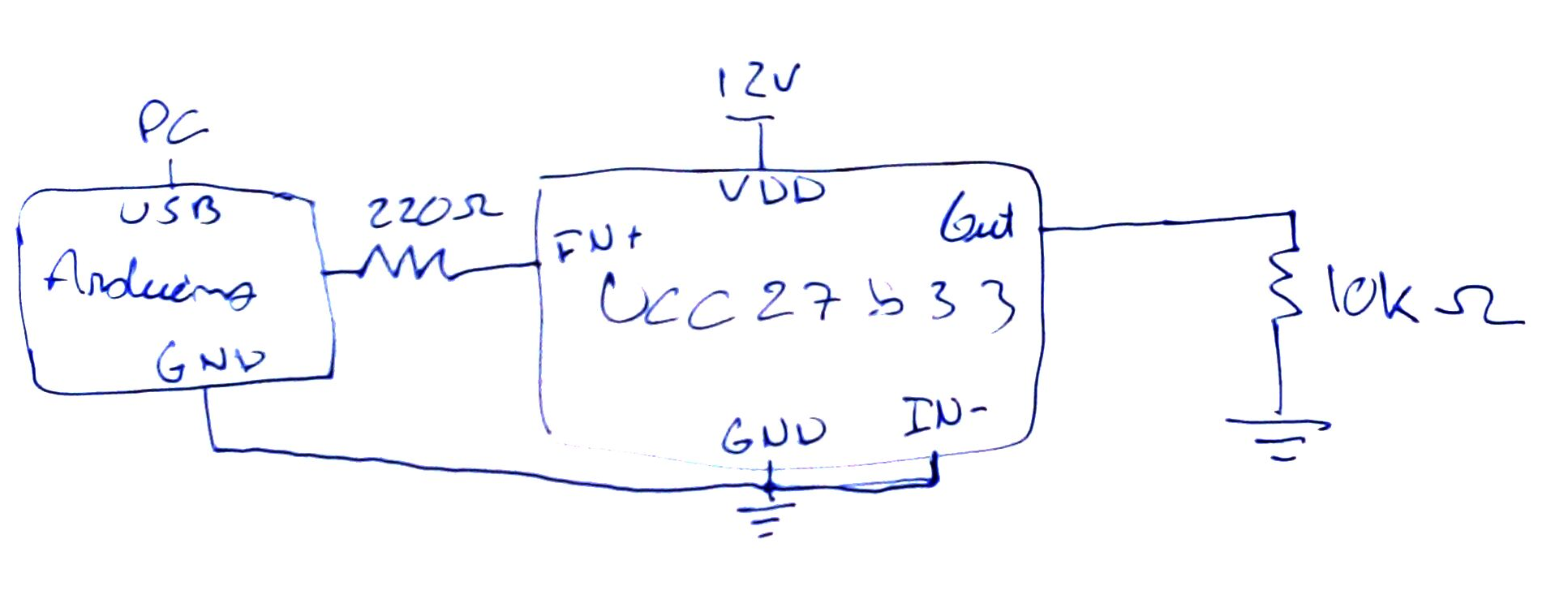Hello,
I am having a problem with this driver. I wanted to do a simple test so I soldered it on a perfboard and connected it to Arduino. I tried with 100nF and 1uF capacitors on the power supply but the results are always the same. I start by generating a PWM with Arduino, 5V 500 Hz 50%, it works fine. I change the duty cycle to 0%, it's ok; I change it to 100%, it's ok; When I change the duty cycle back again to 50%, it stops working. The signal on the output of Arduino is correct, 5V PWM duty cycle 50%. The signal on the input IN+ of the driver is attenuated, 1V PWM duty cycle 50%. The output of the driver is 0V. I try again the duty cycle with 100% but the driver never works again correctly. Eventually the signal on the input IN+ is always 0V, no matter what I do. I stop using the PWM of Arduino and connect the input IN+ directly to the VDD 12V. Nothing happens. When I remove the wire and connect it to 12V and after GND, 12 V again, etc, sometimes it start working. So on the output of the driver I obtain 12V as expected. But I have to do it many times.
I decided to use the IN- input, so the IN+ I connect to 12V. The result is the same.
I already tried 3 drivers, the result is always the same.


